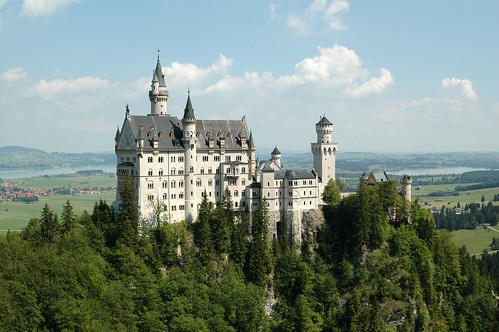
In the scope of our nation branding discussion in class, we learned that images of nations don’t change from one day to another. On the contrary, the images are very persistent. Over the last century there are only two countries that have experienced a tremendous change in image: Japan and Germany.
One way to at least influence the depicted image a bit and to learn about a country such as Germany are games. Yes, the good old board games. The German game company Ravensburger is known for its puzzles and parlor games for all age groups. One of the famous games is “Germany Pairs,” a card game in which 104 cards are laid face down and two cards are flipped face up over with the goal to turn over pairs of matching cards. The “Germany Pairs” shows 52 different pictures and photos of what is typically and descriptive for Germany.
The first version of the game was launched in 1985, a second updated version was introduced in 1992 and in 2006 Ravenburger introduced the latest one. The 52 images used for the game have changed a lot over the years, partly because of historical events such as the end of the Berlin Wall, partly because of a changed perceived image of Germany.
Only six images have made it through all three versions of the game and therefore are the most persistent images others have about Germany. Among these images are a photo of a German shepherd, the Cinderella Castle and a freshly tapped bear. New photos in the latest version include a photo of the ICE 3, a German high-speed train, and a photo of Dornfelder grapes, a vine typically grown in Germany.
From a nation branding perspective I would argue that there has definitely been effort put into reshaping the perceived image of Germany and reframing the country as a technological-savvy and wine growing country. I think it is interesting that even games targeted towards kids all over the world can influence the way people think about a country.
For more infos: http://einestages.spiegel.de/external/ShowTopicAlbumBackground/a3926/l0/l0/F.html#featuredEntry (in German)




We were discussing earlier about how China used their Public Diplomacy in order to convince the Chinese what China was like, and how that can't be done in exactly the same way in the US because of the Smith-Mundt Act.
ReplyDeleteWell, as some of you might know (and Nina I'm sure does) Germany had a bit of a tough time with their image for awhile. In fact, I would say that it wasn't until the 2006 World Cup that there was a big surge in German identity and national pride. Because of this, there was a campaign called "Du Bist Deutschland" (You are Germany) which used many of the same tactics that we saw in the American "commercial" portraying Germans and all of the daily activities they partake in. There is a little more talking though, but it's in German, so if you want to take a gander, here is a commercial from the campaign: http://www.youtube.com/watch?v=bq_MRWewv80
FYI
ReplyDeletehttp://www.smith.edu/news/2008-09/cigaretteexhibition-120.php